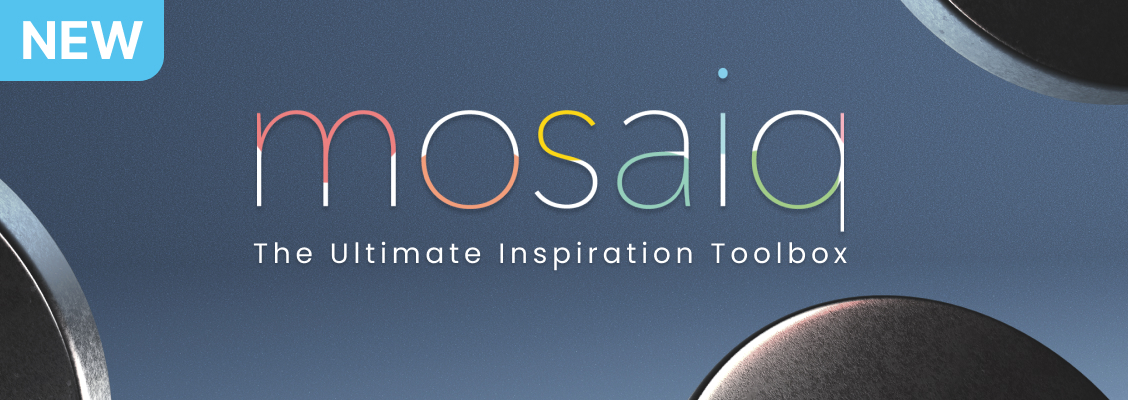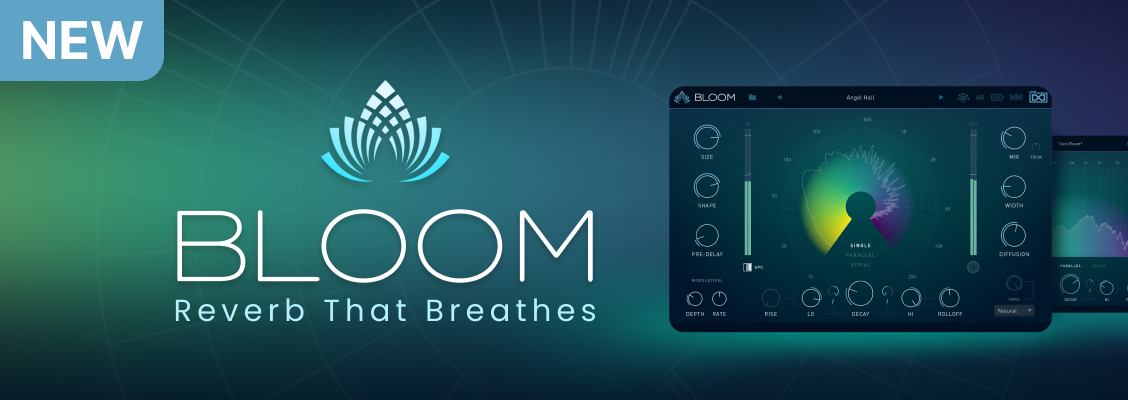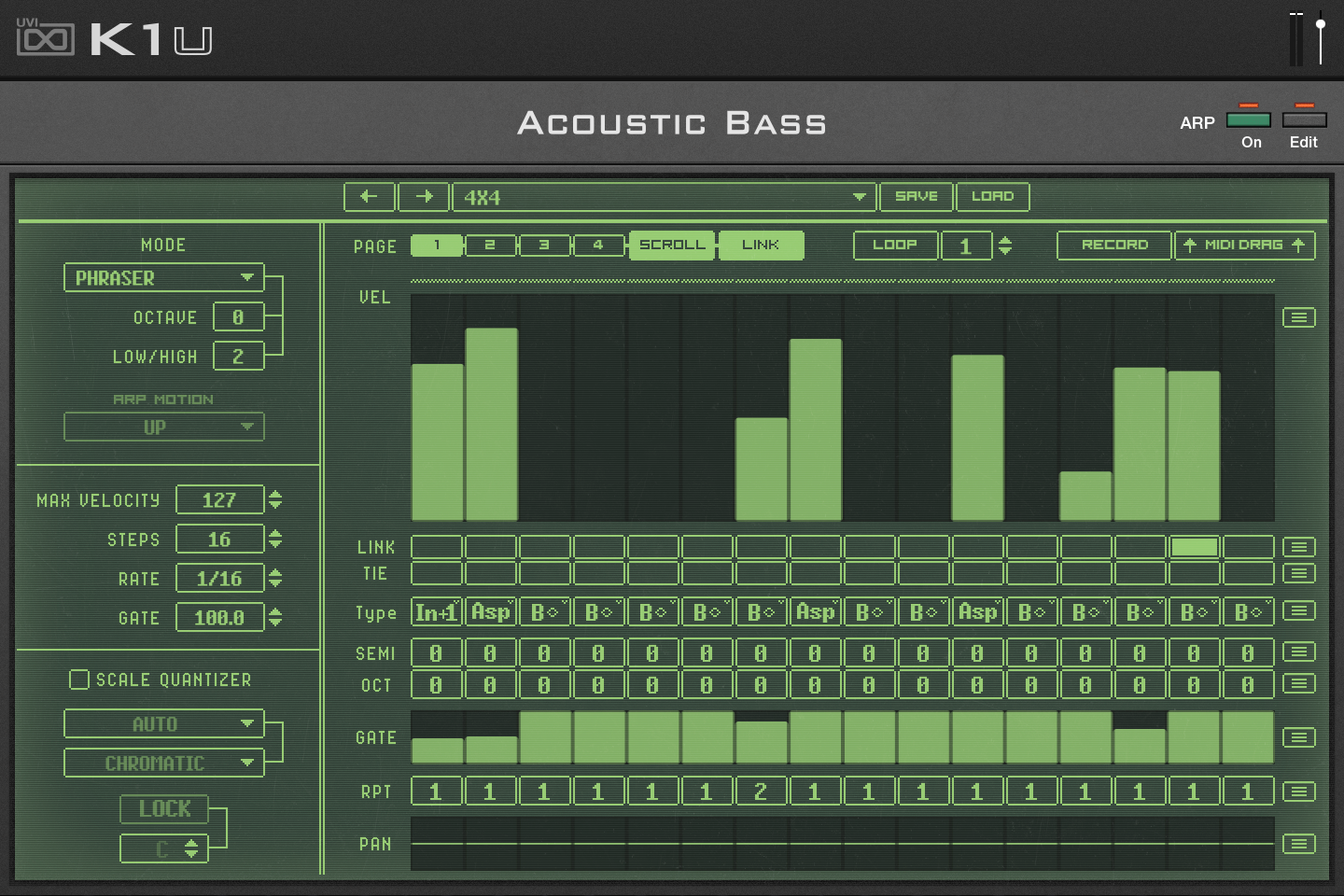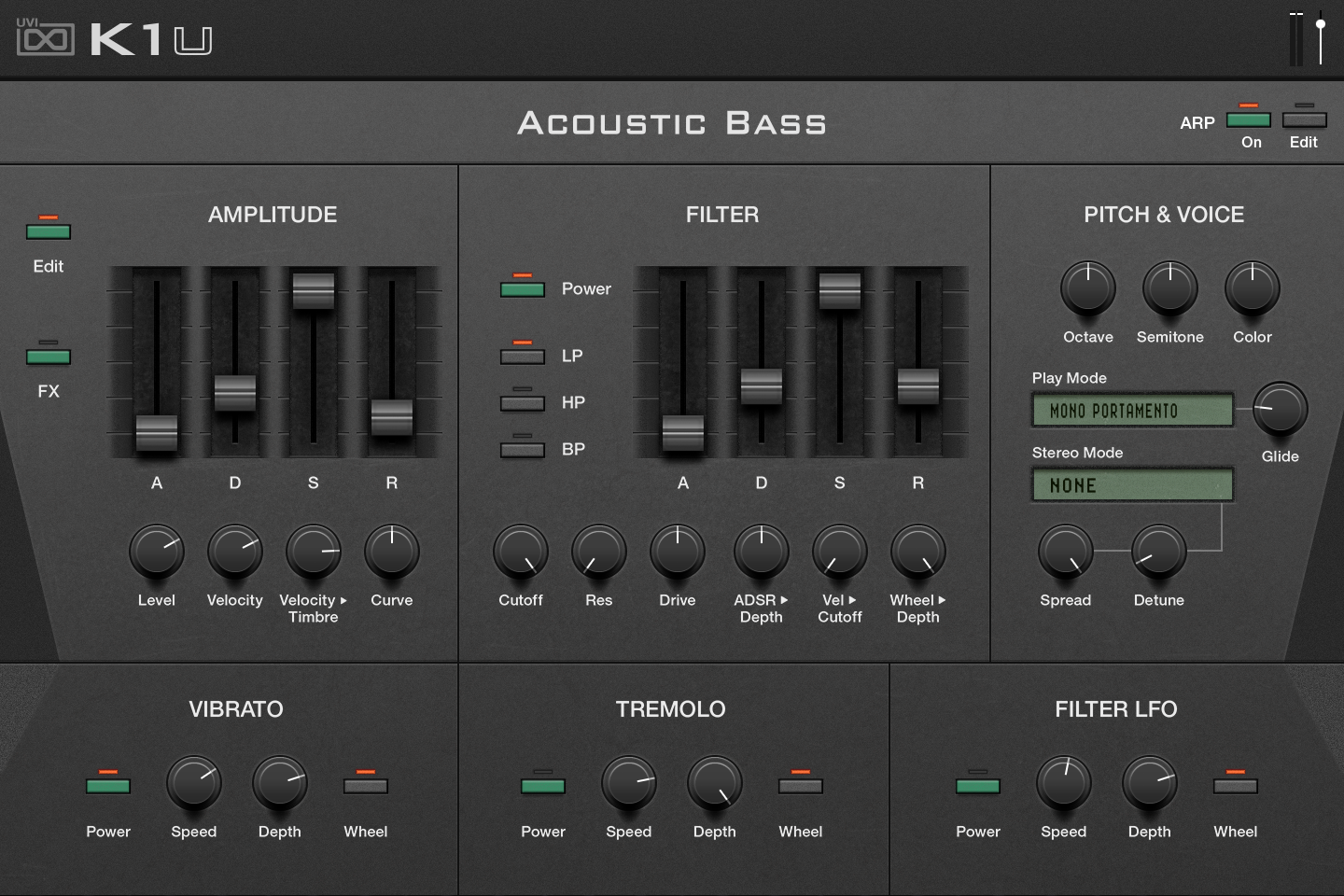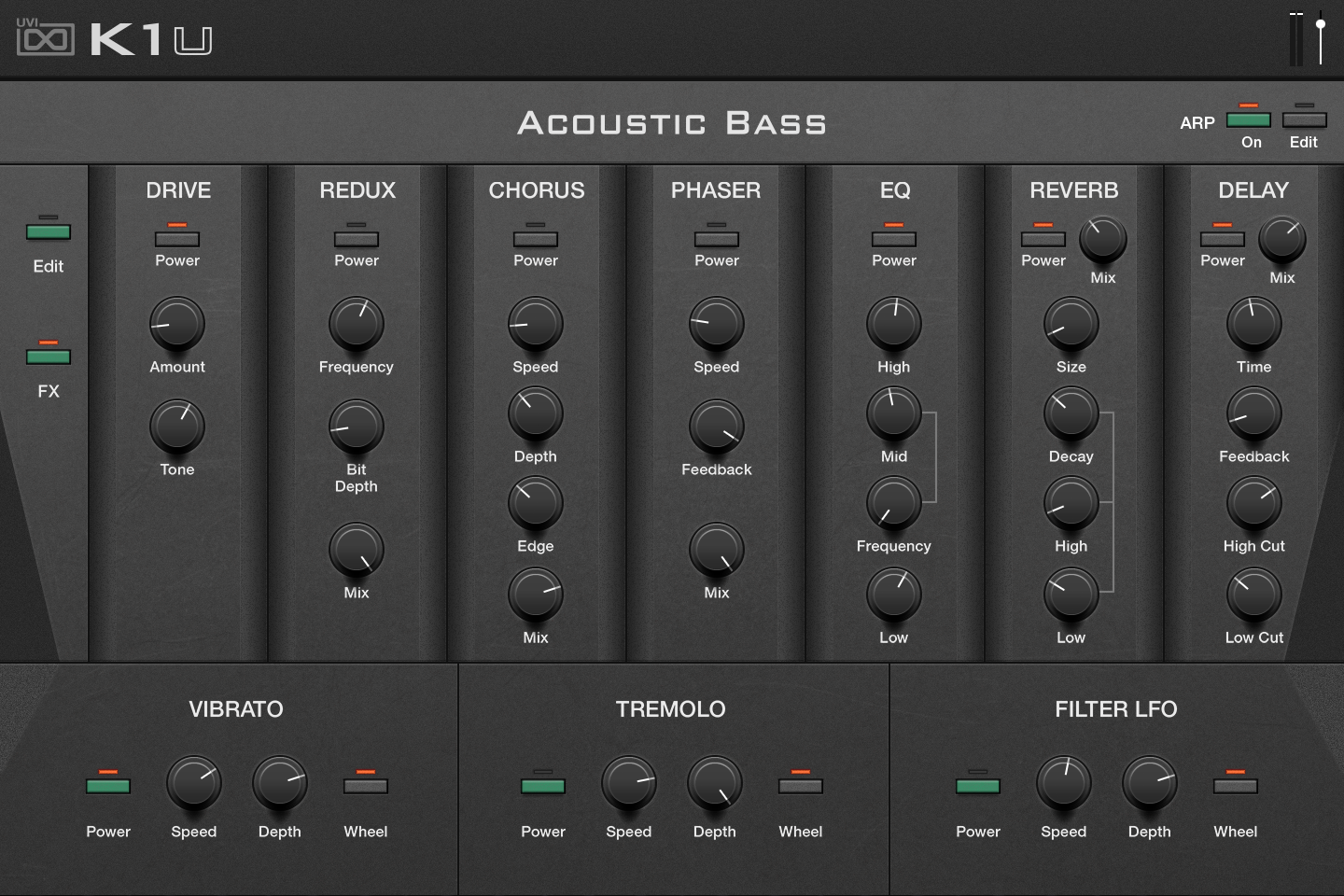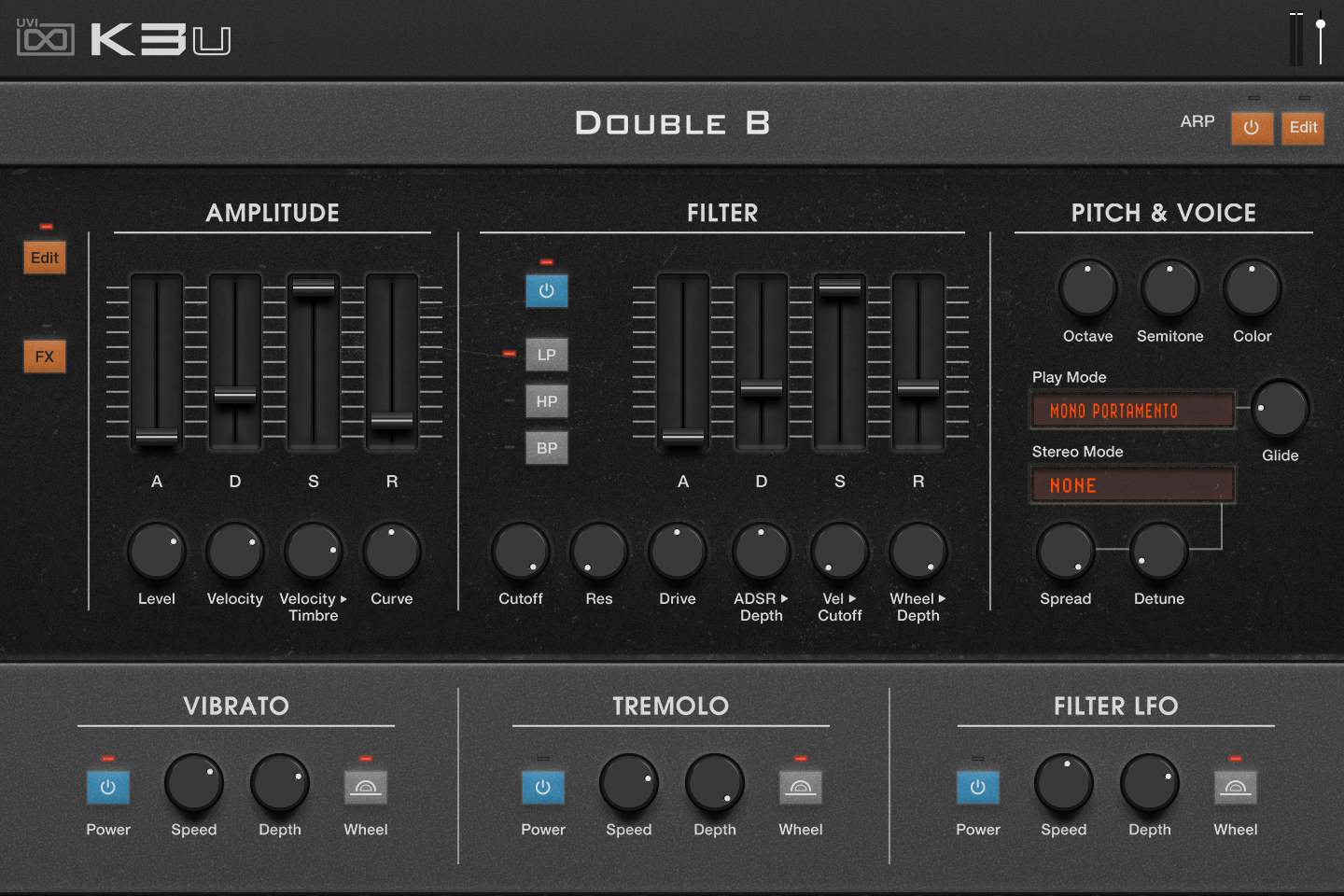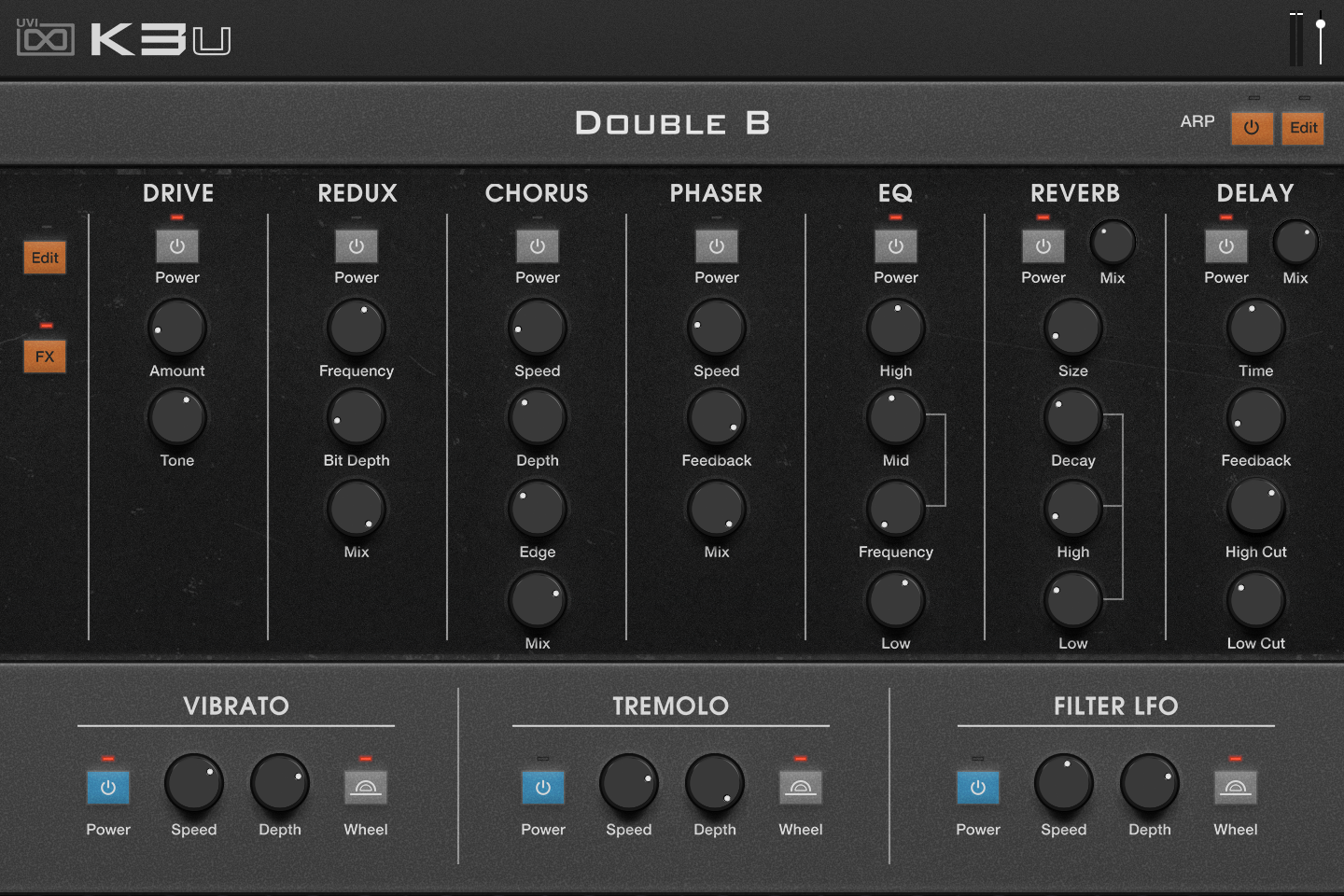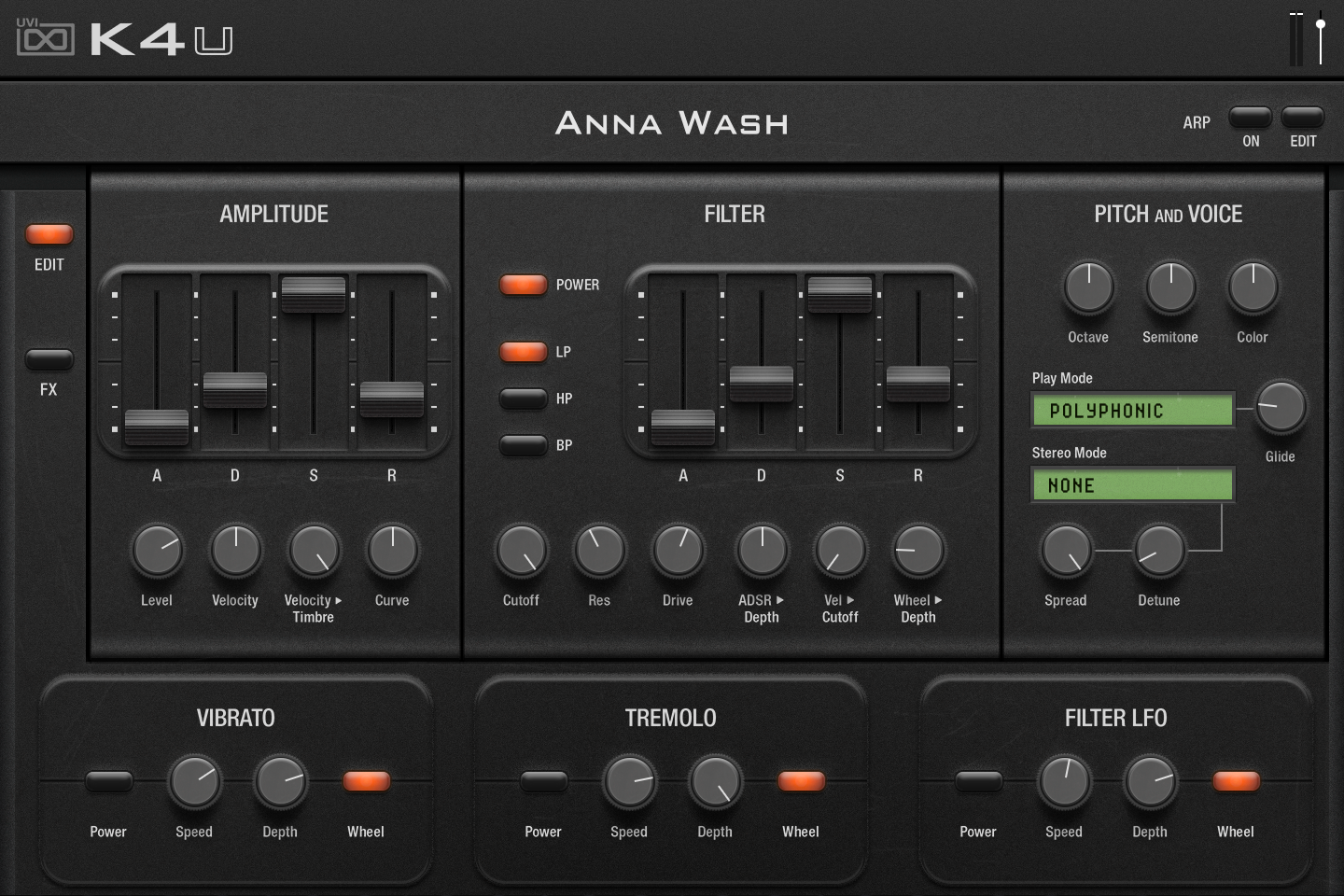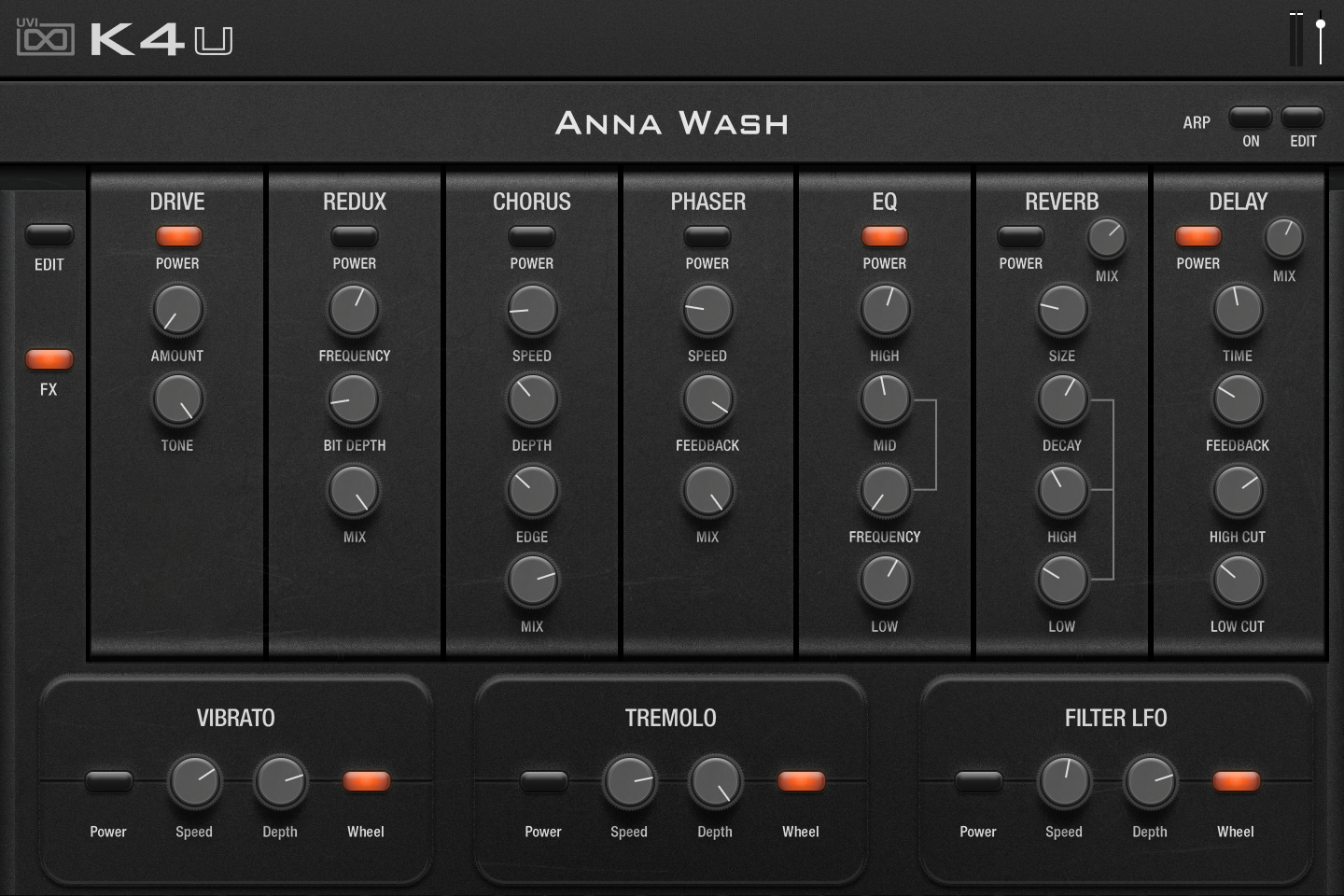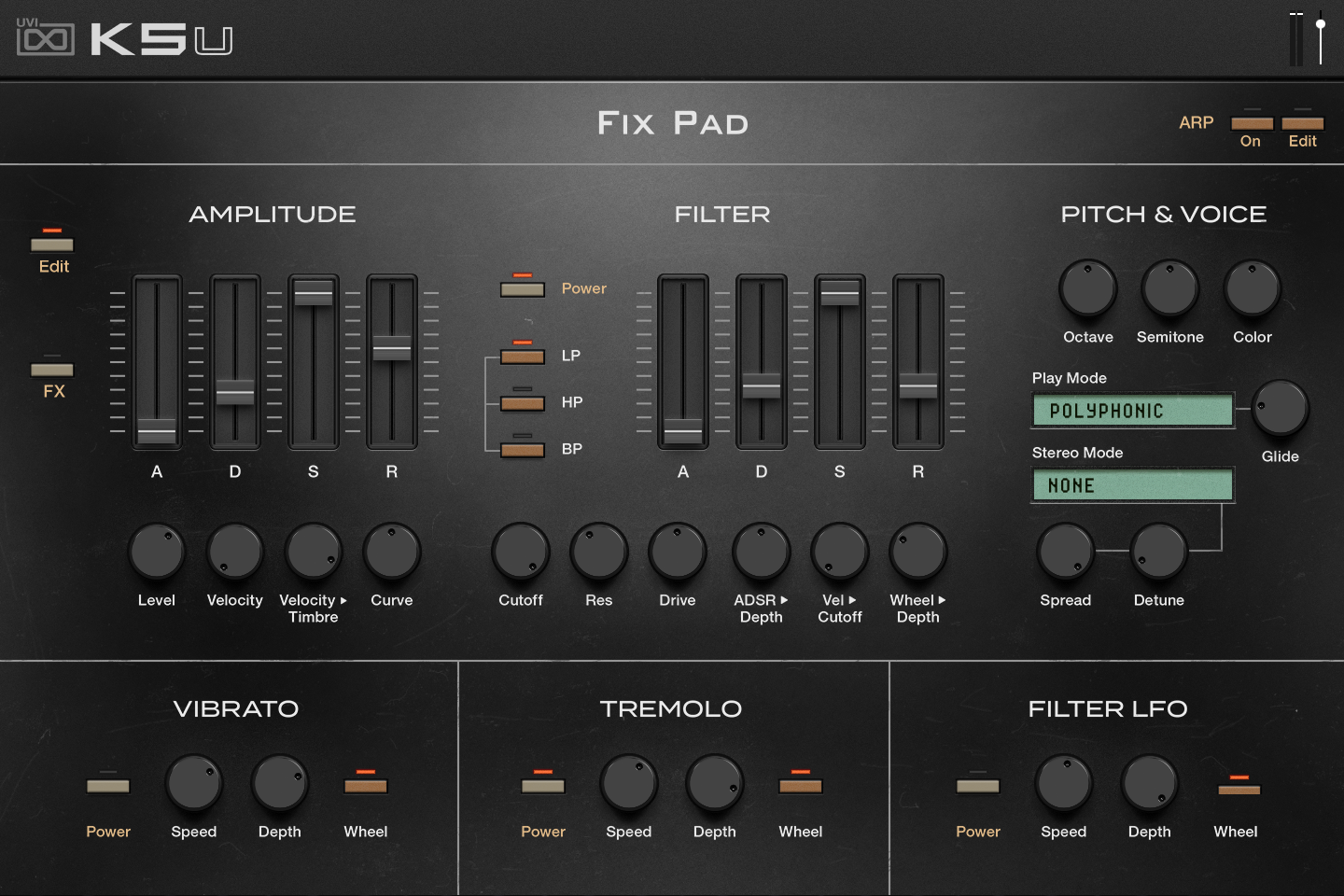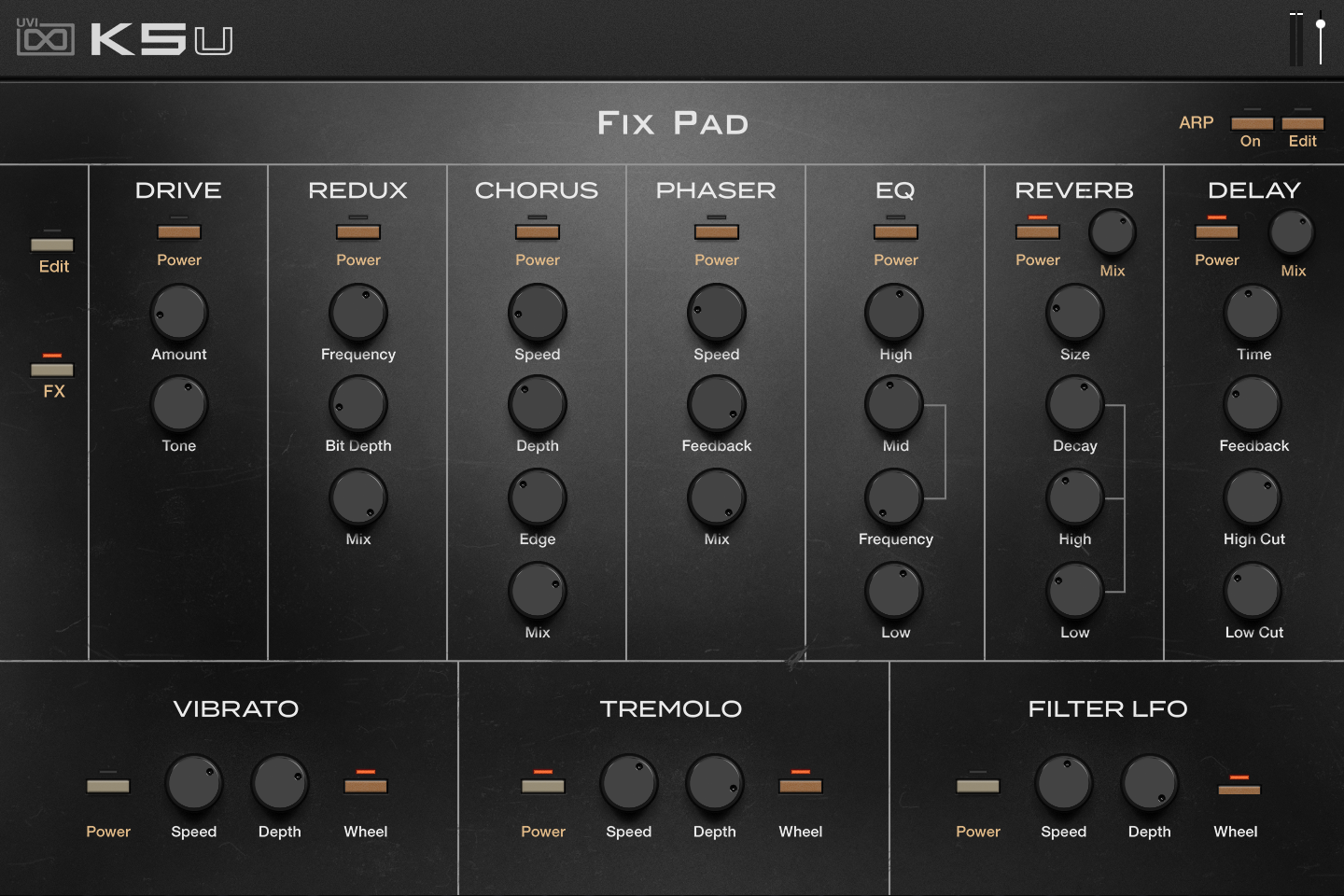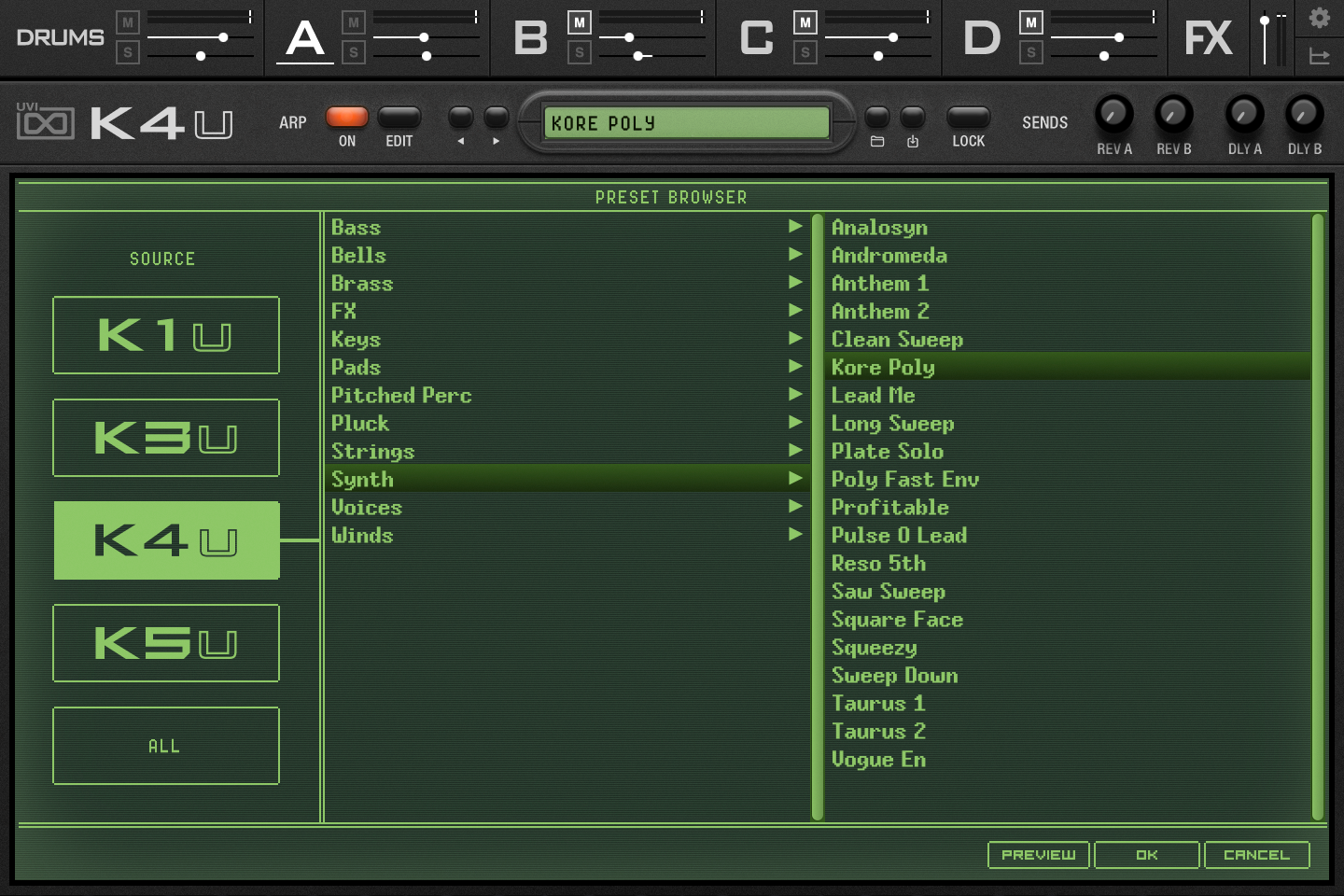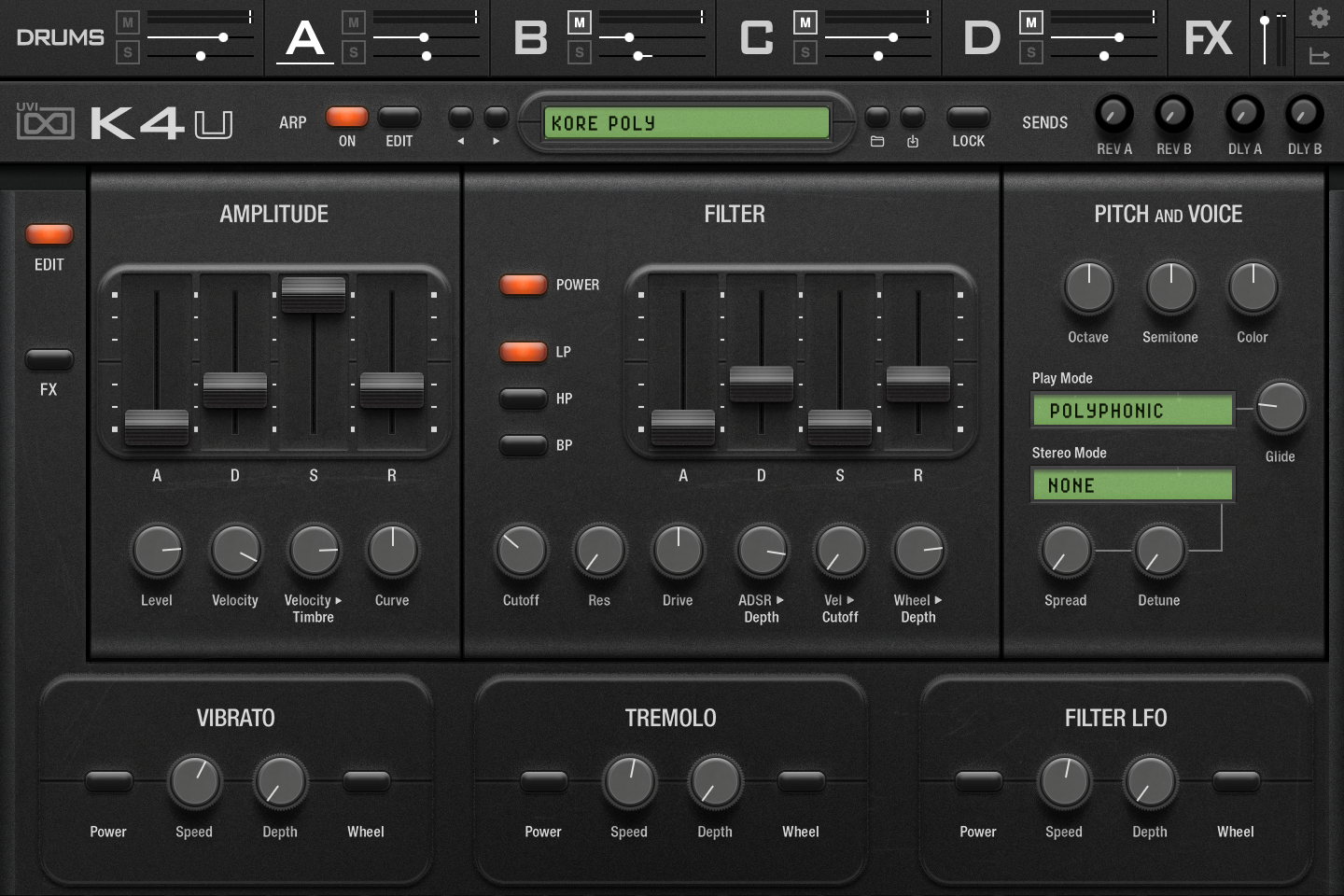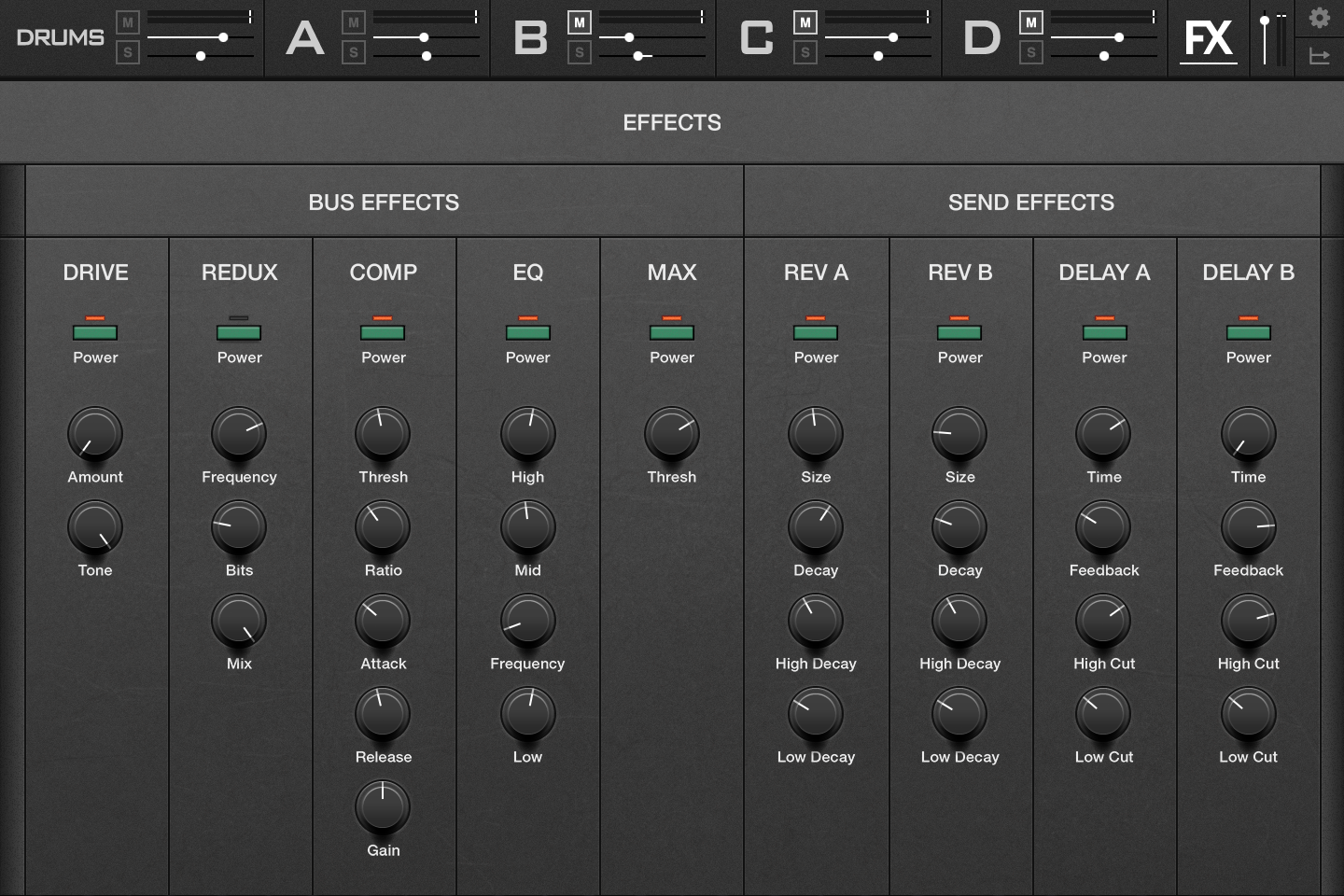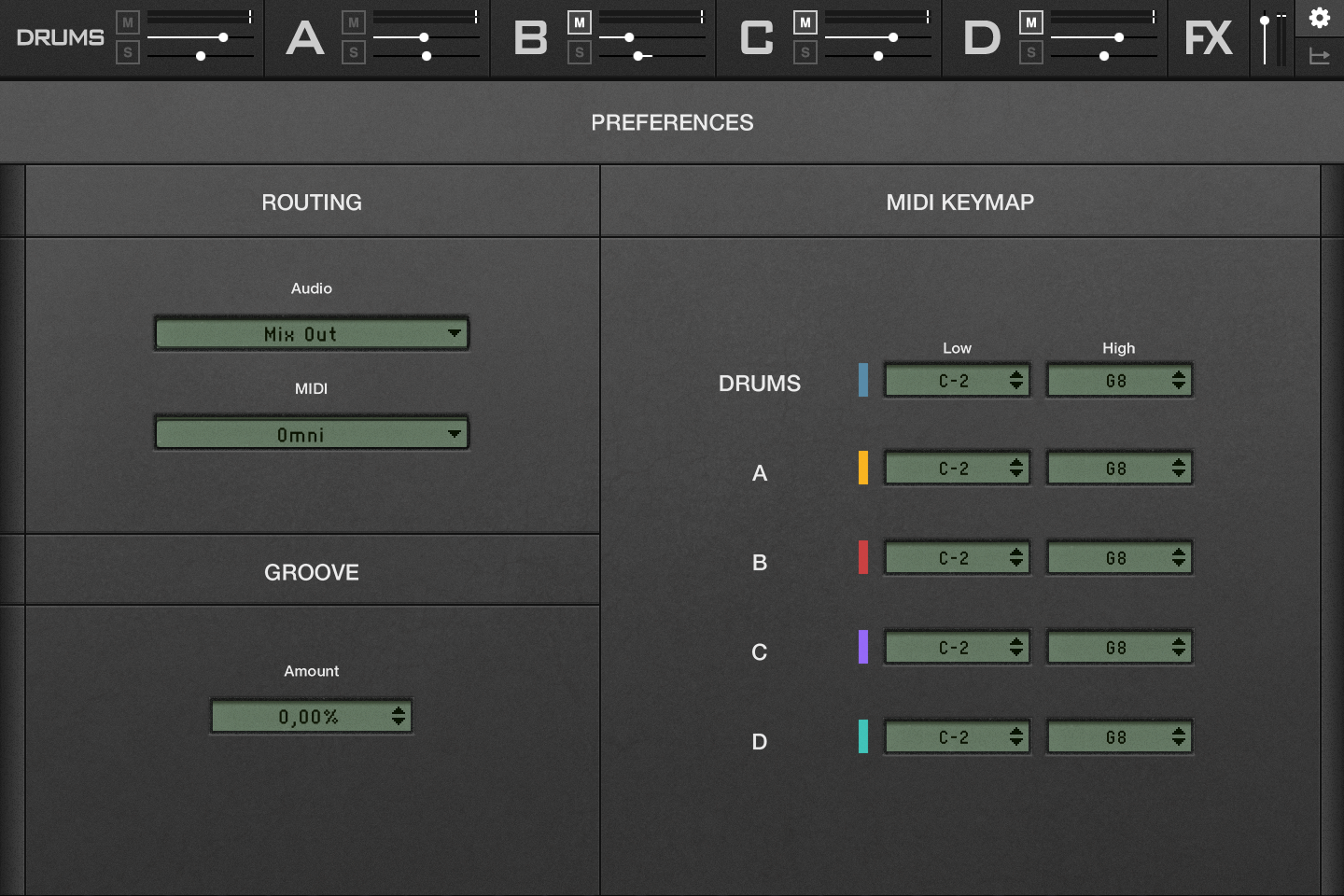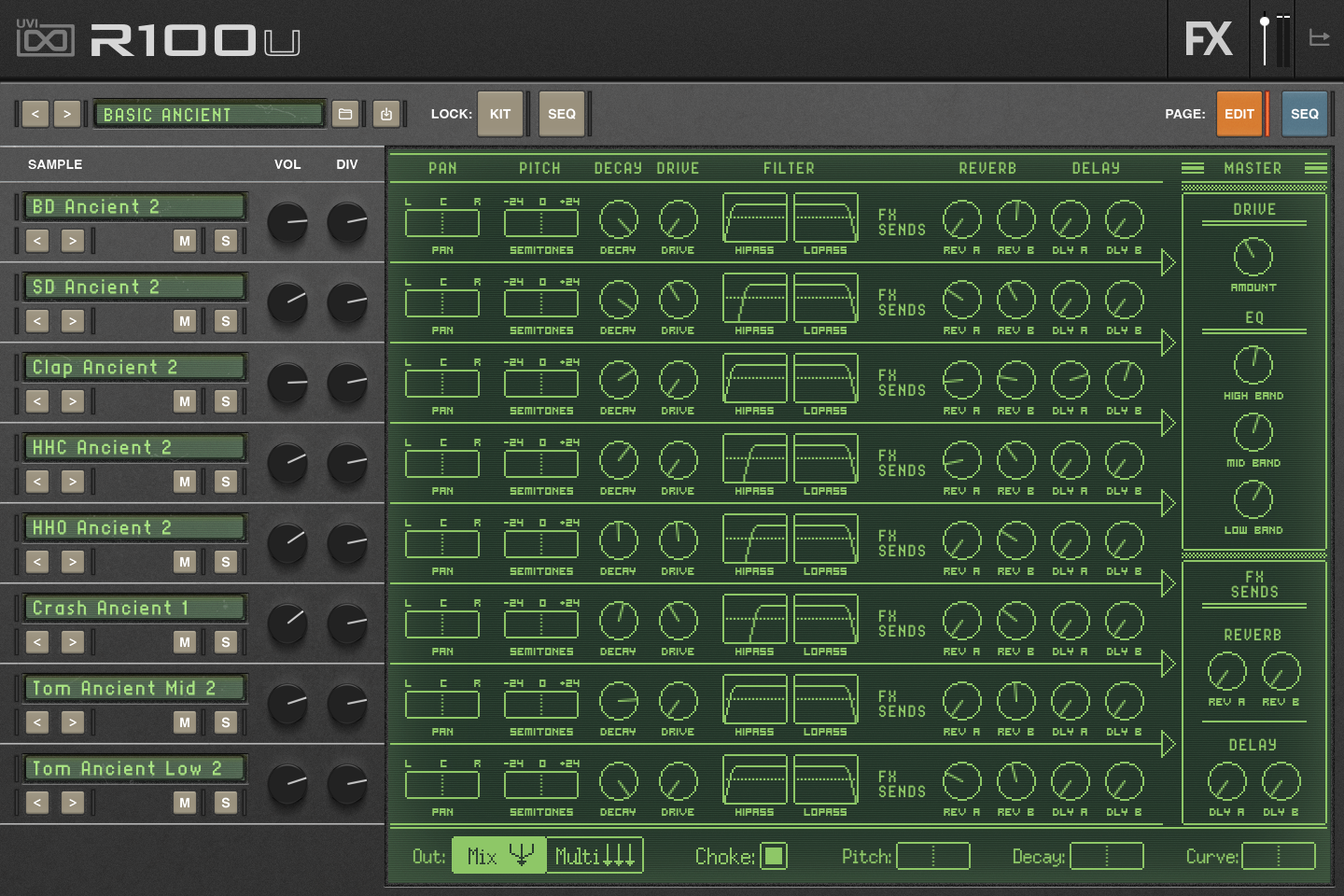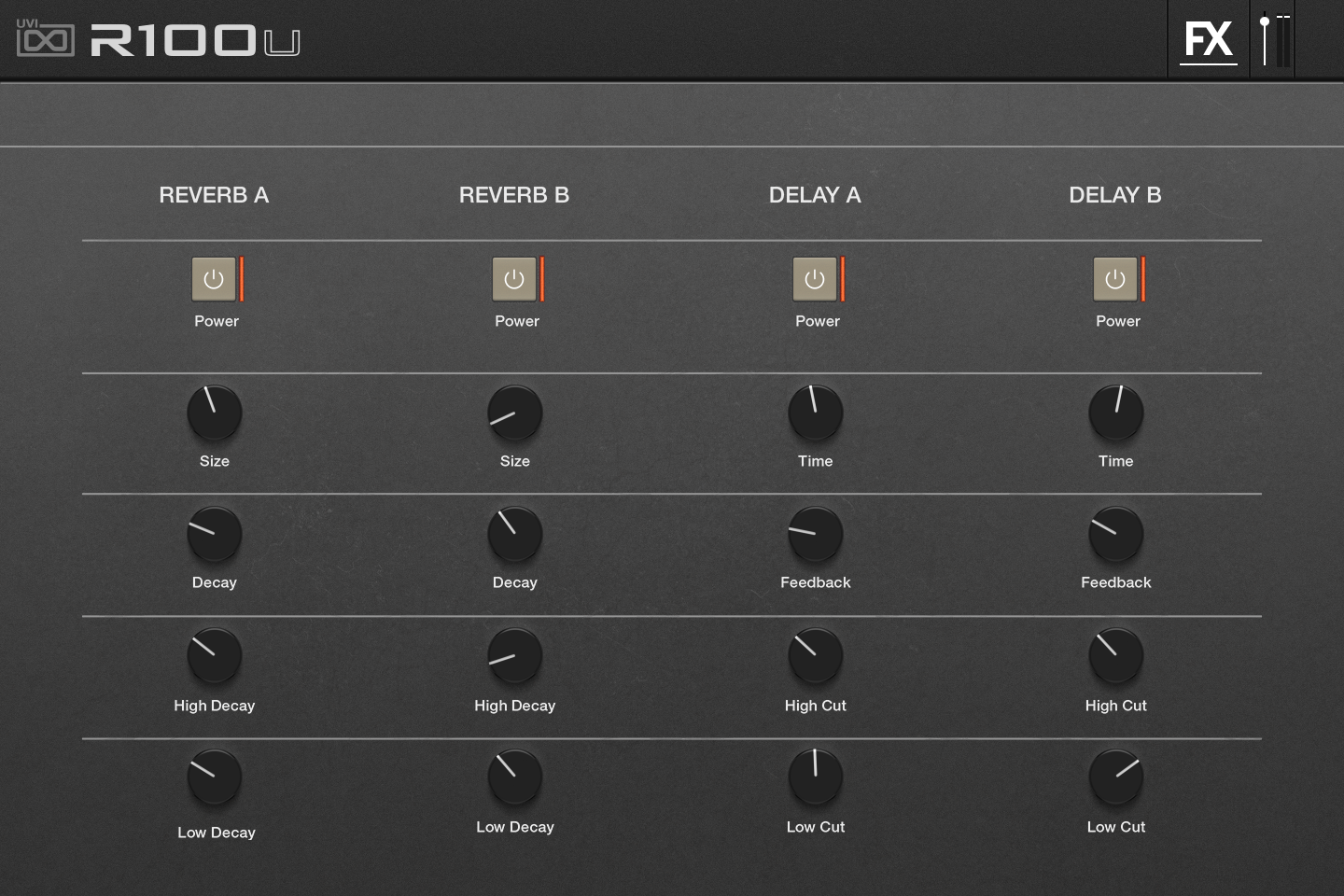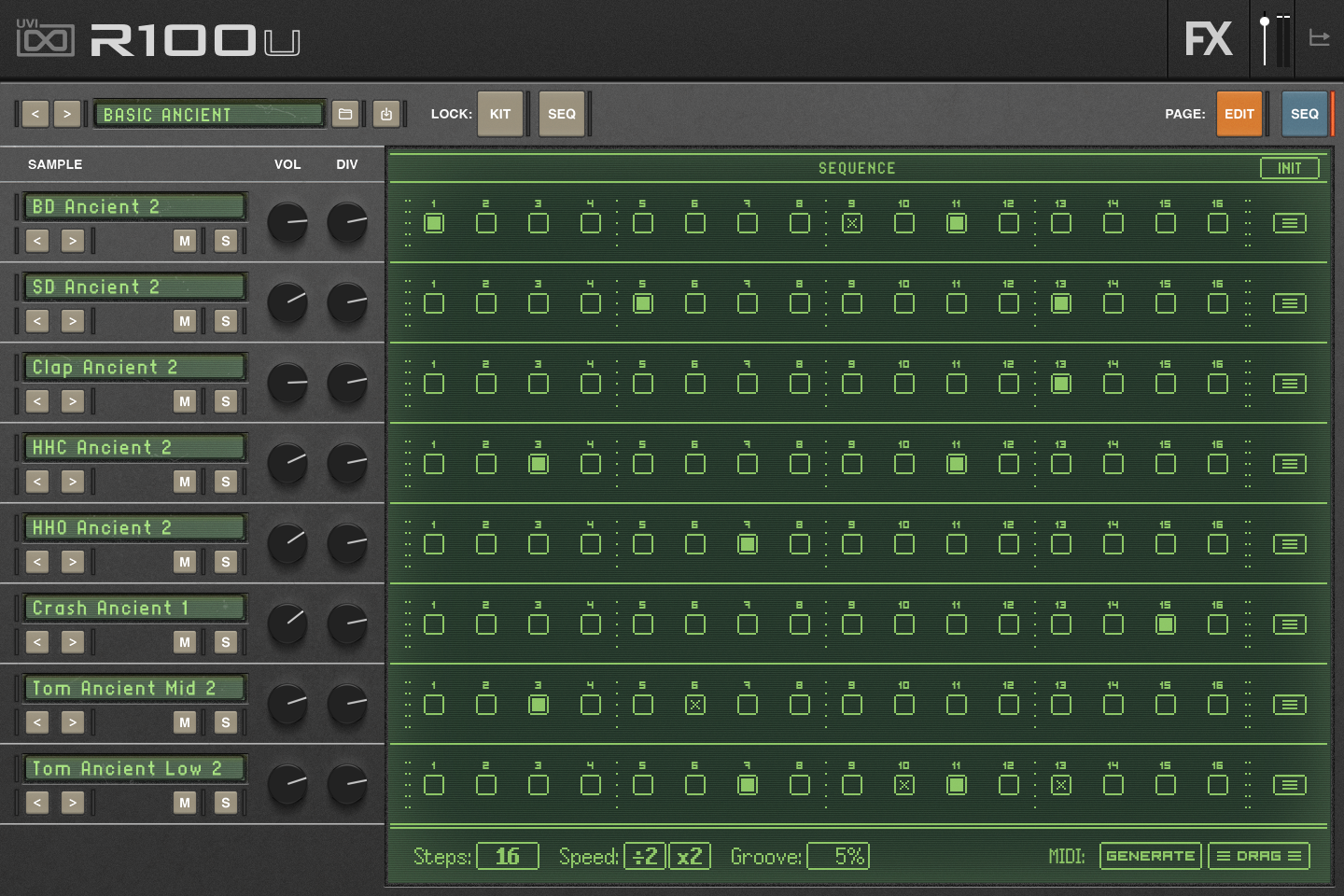
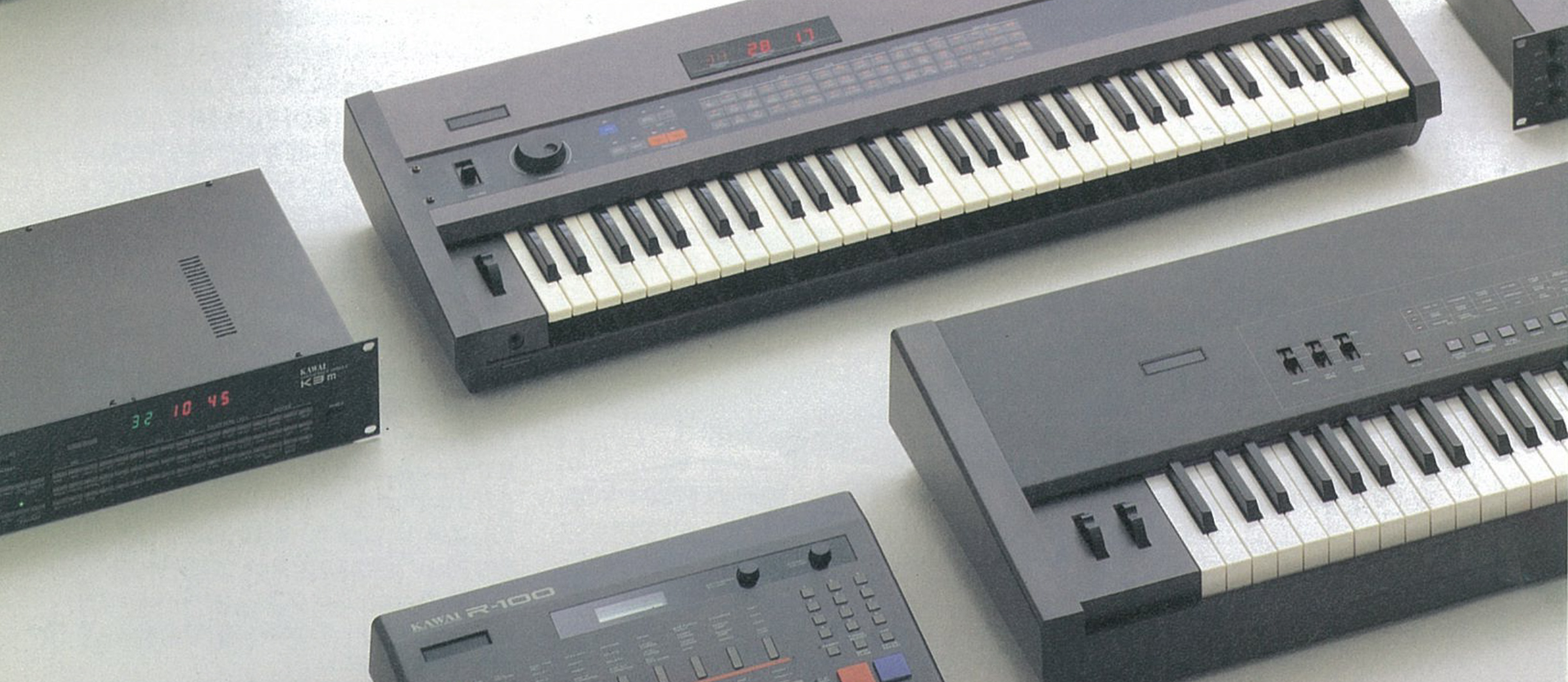
The release of KAWAI Vintage Legacy is an opportunity to take a closer look at the inspiration behind it. With the support of KAWAI's teams in Japan, this project was a special opportunity to rehabilitate these machines, blending new and vintage sounds from the KAWAI K1, K3, K4, K5, R100, XD5.
The beginnings of the Kawai Musical Instruments Company can be traced all the way back to 1927 in Japan. The venerable piano manufacturer spent 50 years creating top quality pianos before releasing their first synthesizer, the monophonic Kawai 100F. This 37 note synth evolved into the 100P and added ‘preset’ selection tabs at the bottom in the late 70’s. In the 80s, when digital synths began to populate the market, Kawai hit their stride with some of the most classic synth entires in modern music. The K3, K5, R100, K1, K4, and XD-5 all hold a special place in the history of synthesis, and it was this legendary collection that inspired UVI’s Kawai Vintage Legacy instrument.

Don’t let the numbering scheme fool you, the K3 came first. This hybrid machine married the worlds of analog and digital in a really unique way. There were 6 digital waveforms to choose from, but the VCA and filter section were both completely analog. When listening to samples of this synth, it sounds *way* ahead of its time. The analog components affecting the digital waveforms give a modern ‘glitchy’ feel that sounds quite a bit like many of today’s modern synths. The K5 followed in the footsteps of the K3, but was completely digital. With a bit more power under the hood, the K5 had 16 part multi-timbral voicing, as well as a digital screen with preset names as opposed to the numbered list of the K3. The K5 was known for making additive synthesis approachable to the average synth player. Kawai Vintage Legacy allows you to get the sound of these vintage instruments but with the convinces of modern preset browsing and categories. You can even use the drive control in the filter section to give a little analog warmth and dirt to your waveforms!
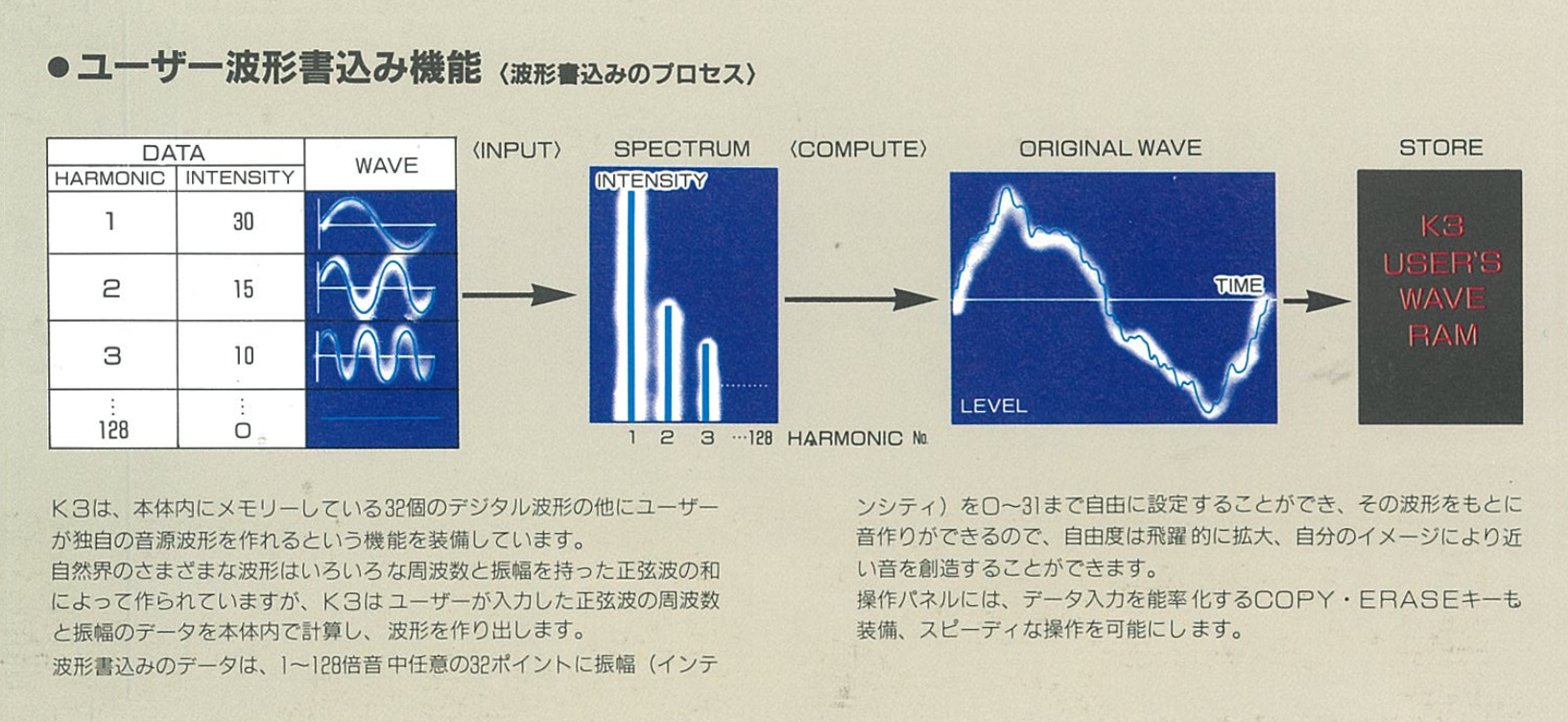
In 1987, Kawai expanded their synth line with the addition of the R100. This was a fully fledged digital drum machine with 12 bit PCM samples at 32kHz. This was a wonderfully high resolution for the time, and it allowed the drum samples to really shine! The R100 had a lot of ins and outs for sync, hi-hat pedal, clock, and more. There was also a memory cartridge slot for storing and sharing kits! You’ll be able to create some really creative tones in Kawai Vintage Legacy’s drum machine. The quick access to the filter along with macros for the decay and drive right on the front page allow you to bring character to the presets without having to dig deep.
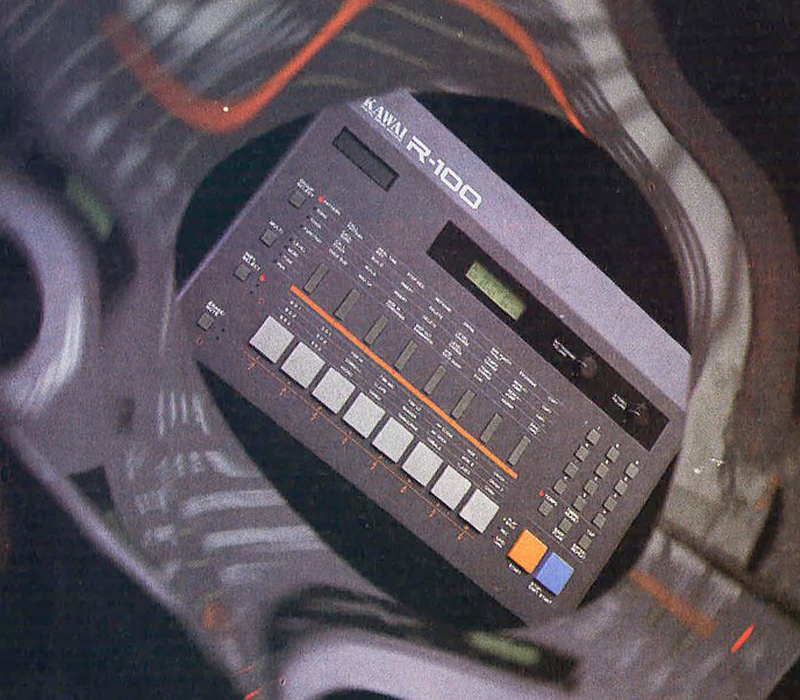
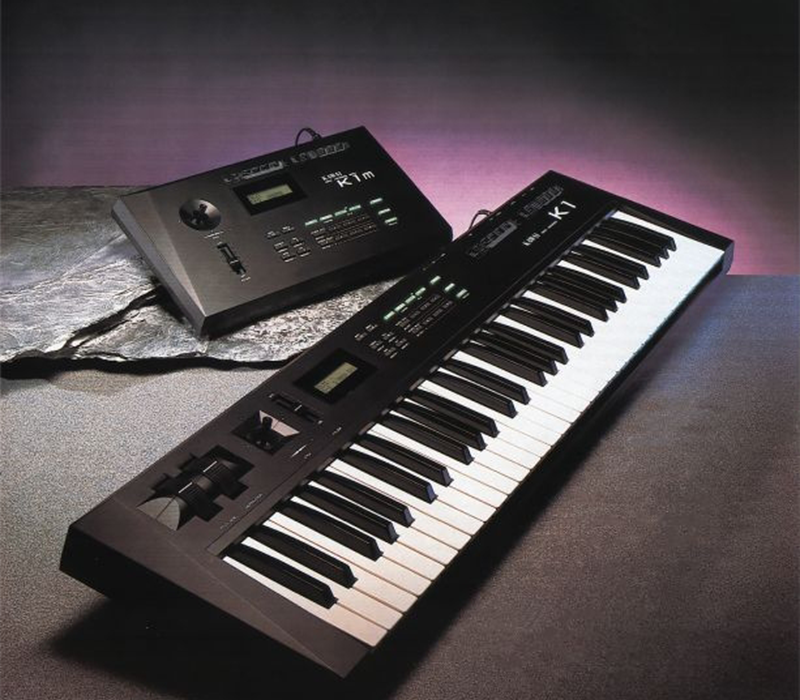
Kawai didn’t forget about keyboards with the release of the R100. The next synth in the pipeline was the K1 which dropped in 1988. The K1 had PCM oscillators for reproducing the waveforms. Kawai added a joystick for live mixing between the waveforms, of which there were 256. A ‘sequel’ instrument, the K1-II was released in 1989 with a bit more power behind it to allow for more simultaneous voices, on board reverb, and upgraded percussion sounds. There are so many great patches in Kawai Vintage Legacy inspired by the K1, but the strings and FM bass sounds are among the most cherished.
After the success of the K1, Kawai released the K4 in 1989. The K4 had 16 bit samples and a very well-developed effect engine. The digital filter section allowed the synth sounds to become more flexible and malleable. Finally, 8-part multi timbral sound sources could be shaped with analog-style filters. The K4 has a really unique sound that can get fairly huge and fuzzy when you want it to! The K4 era also ushered in a new drum machine, and that was the XD-5. This beast was sample based, but focused specifically on drum waveforms. 4 samples can be combined to create a single drum sound. Envelopes and resonant low pass filters really helped push it into popular use for electronic music. The addition of a ring modulator also allowed the XD-5 to get ‘out there’ in terms of sound design!

Kawai Vintage Legacy is an instrument that pays a loving tribute to this important slice of synth history. The sounds and soul of the original machines are present, but the presets and convenience of modern libraries allow you to access all of these machines in a snap. This collection has long been a hidden gem used by producers to give distinct character and a unique edge to compositions. With the power of modern computing, you don’t have to be held back by the voice-limitations of the original instruments, either. MIDI assignment is a snap, of course, allowing you to modulate parameters with a variety of controllers from foot pedals to mod wheels. We’ve also added in a powerful arpeggiator to all of the instruments allowing you to use those original sounds in creative ways to get the most out of them! From lo-fi grit to incredibly think sonic textures, you’ll find what you need to take your productions to the next level with Kawai Vintage Legacy.
UVI Focus
- UVI Focus - Throwback 2025 - Sometimes, we just want to rewind
- UVI Focus - Augmented Choirs: A Vocal Odyssey Between Tradition and Innovation
- UVI Focus - Creating Immersive Experiences: The Power of Post Production and Foley Sound Design
- UVI Focus - Behind the Sound: The approach powering SonicBundle
- UVI Focus - In conversation with Tonnerre
- UVI Focus - Discover 5 reasons why you need Mosaiq
- UVI Focus - A look at our most celebrated products
- UVI Focus - Rediscover iconic sounds with Doctor Mix
- UVI Focus - Throwback 2024, a year of releases
- UVI Focus - The Art of Tape: Tape Suite and the Revival of analog Techniques
- UVI Focus - Exploring the legends behind Quadra Modular
- UVI Focus - When Creativity Meets Innovation
- UVI Focus - Key Suite's 5 Rare & Unconventional Machines
- UVI Focus - In Conversation with Jean-Claude Chapuis
- UVI Focus - In Conversation With Venus Theory
- UVI Focus - HX-20: Reviving the MS-20 inspiration in 5 timeless tracks
- UVI Focus - In Conversation With Jon Carin
- UVI Focus - 2023 Throwback - A year of inspiration
- UVI Focus - 10 Falcon Power-Features You Should Know
- UVI Focus - Soul Bass & Soul Drums: A Dynamic Duo
- UVI Focus - Synth Anthology 4 - Experiencing Sound Design with MPE
- UVI Focus - The story of KAWAI
- UVI Focus - In Conversation With Antoine Martin
- UVI Focus - Advanced Sound Design Techniques with Falcon Expansions
- UVI Focus - Phasor: The Story of a Mythical Effect
- UVI Focus - 5 Key Features of Percussion Factory 2
- UVI Focus - The story of Vintage Vault 4
- UVI Focus - In conversation with Lou Wiss
- UVI Focus - 7 Hidden Gems of Toy Suite
- UVI Focus - PX Guitar Syn, A Piece of Hybrid-Instrument History
- UVI Focus - In conversation with Jordan Rudess
- UVI Focus - IRCAM & UVI, a successful pair
- UVI Focus - Behind-the-scenes of Soul Drums
- UVI Focus - Deep Dive into Synth Anthology 4's modular rarities
- UVI Focus - Deep dive in Falcon's 'Texture' Oscillator
- UVI Focus - In conversation with Simon Stockhausen
- UVI Focus - Deep dive in World Suite 2's Oriental Ensemble
- UVI Focus - Exploring Key Suite Bundle Edition
- UVI Focus - Behind-the-scenes of Walker 2
- UVI Focus - In action with Dual Delay X
- UVI Focus - In action with Shade
- UVI Focus - In conversation with Guillaume Roussel
- UVI Focus - Behind-the-scenes of Augmented Orchestra
- UVI Focus - Behind-the-scenes of UVI

